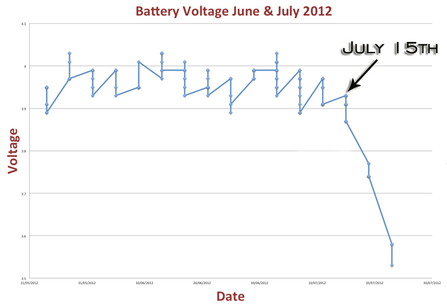Just a quick update on Einion. We're a little bit worried about some of the latest data coming through for him. The transmissions have been getting weaker since July 16th and no GPS points (the points you see on Google Earth) have been sent since July 22nd.
An in-depth look at his electronic data shows that from around July 15th onwards, his battery voltage has decreased sharply. It should be around 3.9 to 4.0 Volts. Below around 3.7V and the signals get weaker and sometimes impossible to interpret.


